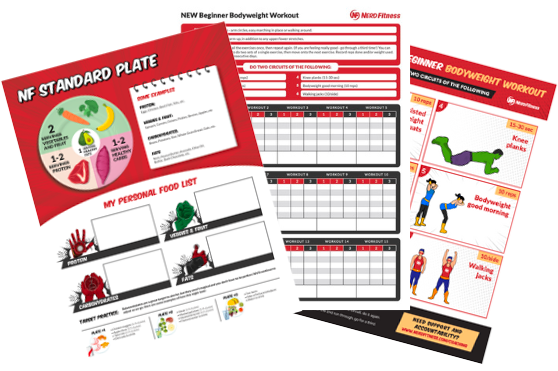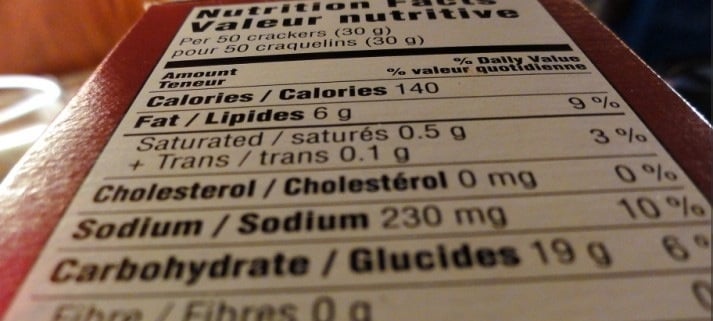
Food marketers are clever.
In the quest for the almighty dollar, companies continually find new ways to make you feel like buying their product is the best possible choice. For a while, it was all about bigger, better, greasier, more delicious.
But as our country became bigger and bigger, the topic of conversation turned to “how can we get healthier?”
So marketers had to change up their tactics. Instead of promoting the unhealthy, they started rebranding and repackaging their products with healthy buzzwords to make you THINK you’re eating healthier, while still making incredibly unhealthy products that keep you addicted to them.
That Lucky Charms Leprechaun is full of sh**! If anybody thinks that sugary cereal is healthy because the box says “made with heart healthy whole grains” they’re kidding themselves. But making the healthy choice isn’t always so obvious:
- Is buying organic really that much better for me?
- Does “no sugar added” mean it’s automatically better than the ones with sugar?
- What’s the difference between free range, grass-fed, vegetarian fed?
Today, I’m gonna teach you how to not get scammed by food labels so you can make healthier decisions when you go shopping…with the added bonus of being able to stick it to the Empire.
This is a monster article, and is meant more of a resource for reference, rather than a quick “hey that’s cool!” skim before moving onto videos of cats.
What does organic Mean?
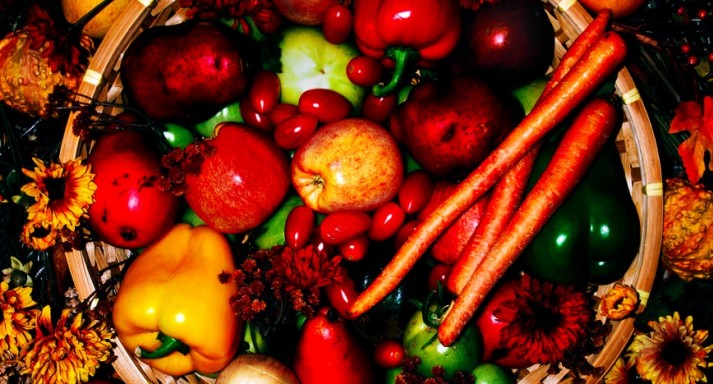
“Organic, so hot right now.” – Jacobim Mugatu
Everybody and their mother is rushing out to buy organic things these days. Organic means natural. Nature is healthy. Therefore Organic is healthy, yes?
…to an extent, but not necessarily.
In order for something to be considered “organic”, it must pass a series of government checklists:
Simply stated, organic produce and other ingredients are grown without the use of pesticides, synthetic fertilizers, sewage sludge, genetically modified organisms, or ionizing radiation. Animals that produce meat, poultry, eggs, and diary products do not take antibiotics or growth hormones.
Along with that, there are three different “tiers” of Organic Labels:
1) 100% Organic: Made with 100% organic ingredients.
2) Organic: Made with at least 95% organic ingredients.
3) Made With Organic Ingredients: Made with a minimum of 70% organic ingredients with strict restrictions on the remaining 30%, including no GMOs (genetically modified organisms).
So, if you see something labeled “100% organic,” then you can be sure you’re getting ingredients that are naturally occurring, or if it’s from an animal then it did not take antibiotics or growth hormones.
[Side note: Don’t confuse this with “All Natural” – there’s no regulation behind this term, and thus means diddly squat]
Back to organics! Organic doesn’t automatically mean healthy. I mean, you can buy organic cookies and organic cereal, but that doesn’t mean they’re good for you. Sure, they don’t have High Fructose Corn Syrup (a big no-no), but they can still contain a ton of sugar and empty calories.
When it comes to fruits and vegetables, I try to buy organic whenever possible, especially if it’s with a fruit with a soft outside.
Here are 10 foods you should always buy organic (when possible), and 7 Foods where conventional is okay.
This might surprise you: a huge portion of “organic” food companies are owned by massive conglomerates (PDF)!
Best advice: Use your best judgment, eat real food, and buy what you can afford without driving yourself crazy. Don’t try to fool yourself when you are buying cookies and ice cream that are “organic.” They might beat the alternative, but that’s kind of like saying “I enjoy getting punched in the face because it’s better than being punched in the crotch.”
Bet you didn’t think you’d get a crotch analogy in an article about food labels, did ya?
Now, speaking of organics…
What about organic milk?

Here’s what is required of milk in order for it to receive the “Certified Organic” Certification:
- At least 30 percent of the food they eat must be grazed at pasture during a grazing season of at least 120 days;
- No antibiotics or growth hormones may be used;
- All feed must be organic;
- No meat or poultry by-products can be in the feed.
A note about the “antibiotics or growth hormones” Almost all regular dairy cows these days are not treated with growth hormones. Though cows, especially cows that are fed grain-based diets, tend to get sick more frequently than grass-fed cows and thus are pumped full of antibiotics to keep them healthy.
Although some have determined there’s no difference between organic and regular milk, I still aim to buy organic should the price difference not be TOO drastic – to support farmers that take the time to get “Organic” certified. That being said, I’m not a stickler about it, as it may not be worth it (see below).
Why is organic milk so expensive? Yes, it requires more money to upkeep a farm for organic cows. However organic milk is also perceived as a higher quality and thus a premium price is placed on it. Due to the length of time required for a farm to receive organic certification (3 years!), supply of organic milk is small compared to regular, and thus the price is driven up.
A note from a farmer just came in: Here’s why you shouldn’t waste any money on organic milk. If the farm that produces the milk is certified organic, cool, what about the adjacent farm? Wind blows seed, artificial fertilizer and any other loose product, and if that is on an organic farm by result of wind, as far as the government is concerned it is still organic, but from a health stand point, technically, that is no longer organic, also the pasteurization is the same regardless of the branding. Just a word from a farmer.
What about raw milk? You’ve probably heard a lot about raw milk in the news recently, as government agencies are doing everything they can to shut down farms that sell unpasteurized dairy. Why? In a 2012 report on raw milk, the CDC stated that before pasteurization, dairy was dangerous, and “raw milk was a common source of the bacteria that cause tuberculosis, diphtheria, severe streptococcal infections, typhoid fever, and other foodborne illnesses.”
However, in the view of a health blogger that I have come to trust, raw milk has been proven to be safe and raw milk is the only REAL milk.
Final recommendation: Minimize dairy consumption to begin with, consider raw dairy if you are up for it, buy organic if it makes you feel better, understanding it might not be much better than the regular stuff.
Chicken Labels

It seems there are a million different labels for buying chicken these days…
- Free range!
- All natural!
- Pasture raised!
- Organic!
- Vegetarian fed!
I reached out to a family friend with 30 years of experience in the chicken industry to help cut through the crud and get the real answers on these:
Let’s break these down and decide which labels are worth checking out
Free Range: Ultimately, this only means that the chicken must have “access to the outside.” A.K.A., a door cut in the side of a house that has some area for the chicken to ‘range” should they so choose. Of course, most of these chickens are already raised in captivity and never once set foot outside. This is not regulated well and thus oftentimes there are no differences between a regular chicken and a free range chicken. If animal’s rights issues are important to you, a more strict classification below would better suit you.
All Natural: Virtually all chickens raised in America are “all natural” by USDA definition. No chicken company adds hormones or steroids to their chickens; it’s not allowed. The “all natural” label isn’t regulated and doesn’t mean anything.
Organic: USDA has the following requirements for labeling “organic” chicken: The number of birds raised in a house is about half of “normal” chicken houses. Only organic feed is allowed (chicken feed is 65% corn, and 30% soymeal. The other 5% of normal chicken feed is bonemeal, feather meal, blood meal and vitamins. Organic chicken cannot receive the vitamins or medicine that normal chickens do. Normal chickens are also vaccinated as day old-chicks, while organic chickens are not. Therefore the mortality rate for organic is 2-3 times normal chickens, hence the increased costs.
Pasture Raised: Ultimately, these birds are raised outside, as chickens would have existed back in the day. They are allowed to eat whatever falls on the ground, be it bugs, worms, grubs, grass, bonemeal from previously decayed animals, and more. They are not confined to a cage. This would probably be your best bet, as the chickens get to spend the most time outdoors exploring compared to the other options.
How do you know for sure what your best bet is? Try to find a local chicken farmer or visit your local farmer’s market and have a discussion with the people selling chicken. Find out how their chickens are raised and get to know them (the farmers, not the chickens, unless you’re in Portlandia).
Egg Labels

Now, if you’re looking to purchase the eggs from chickens rather than chickens themselves, you have an entire new set of labels to check out.
A lot of the definitions and descriptions from above remain, but there are a few other differences.
The below definitions are from the Humane Society:
Certified Organic: The birds are uncaged inside barns or warehouses, are required to have outdoor access, but the amount, duration, and quality of outdoor access is undefined. They are fed an organic, all-vegetarian diet, free of antibiotics and pesticides (as required by the U.S. Department of Agriculture’s National Organic Program). Beak cutting and forced molting through starvation are permitted.
Free-range: Like above, the birds need access to outdoors to be considered “free range,” but there’s no regulation as to how much time (if any) is spent outdoors.
Certified Humane: The birds are uncaged inside barns but may be kept indoors at all times. They must be able to perform natural behaviors such as nesting, perching, and dust bathing. There are requirements for stocking density and number of perches and nesting boxes. Forced molting through starvation is prohibited, but beak cutting is allowed.
Animal Welfare Approved: As the highest animal welfare standards of any third-party auditing program, the birds are cage-free and continuous outdoor perching access is required. They must be able to perform natural behaviors such as nesting, perching and dust bathing. There are requirements for stocking density, perching, space and nesting boxes. Birds must be allowed to molt naturally. Beak cutting is prohibited.
Cage-Free: Hens laying eggs labeled as “cage-free” are uncaged inside barns, but they generally do not have access to the outdoors. They can engage in many of their natural behaviors such as walking, nesting, and spreading their wings. Beak cutting is permitted.
Vegetarian-Fed: These birds’ feed does not contain animal byproducts, but this label does not have significant relevance to the animals’ living conditions. This only means they’re not outside eating non-vegetarian things…like bugs and remains of old animals (you know, like free animals do).
So, once again it looks like we have mostly 80% hype and 20% legit labeling. Your best bet at a store? “Animal Welfare Approved” eggs if you care about the wellbeing of the chickens who lay the eggs…though I haven’t seen many of these on labels at my local grocery store. “Free range” and “organic” aren’t necessarily indicative of the conditions the birds might have been brought up under.
Want to go even further?: Get your eggs from a local farmer or local farmers market that has a solid reputation. Here’s the best recommendation from Food Renegade: Find a local egg supplier on sites like www.eatwild.com or www.localharvest.org, or check Craigslist!
Meat Labels
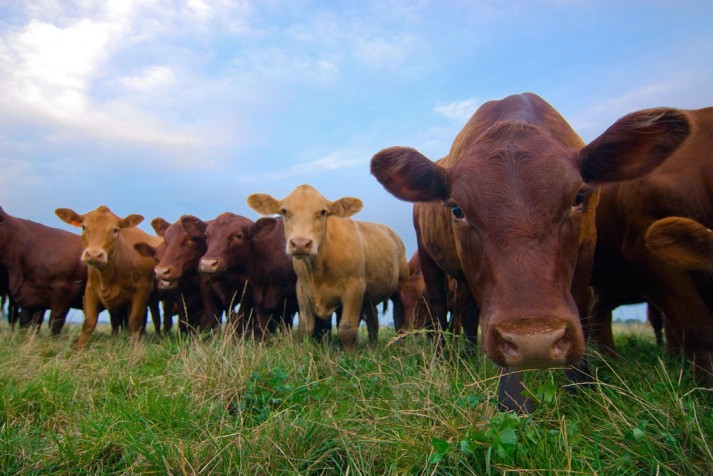
Ahhhh, the most confusing of them all.
Is organic meat worth it?
What is grass fed?
What the heck does “Vegetarian-fed” mean?
It seems like there’s 18,000 types of meat labeling out there, so I’m gonna simplify the heck out of this for you.
Regardless of what the label says, unless it’s 100% “Grass-fed,” it’s not optimal. Cows are ruminants, meaning they are meant to eat grass. Unless specifically labeled as “grass-fed beef,” then that cow was likely forced to eat foods its stomach cannot handle (grains among other things) in order to fatten it up as quickly as possible for slaughter.
Factories feed cows as much grain as possible to get them as fat as possible as quickly as possible, even if the grains make the cow sick. In order to keep the cow alive, they pump him/her full of antibiotics to keep them standing.
Not good.
Organic beef might be slightly better for you than regular beef (organic cows cannot be treated with antibiotics, they must have “access” to pasture (though for how long is not determined), but may still be fed organic grains.
If the beef is “grass fed” (but not specified as 100%), then it’s possible it was raised indoors with small access for a small amount of time to go out and “graze” – which oftentimes it chooses to ignore. This is tough to determine when purchasing meat at a grocery store.
So, what’s a Rebel to Do?
Final Answer: 100% Grass-Fed Beef. This stuff is the best possible option for you if you should choose to consume beef. Unfortunately, this can quite cost prohibitive if you chose to buy it from a place like Whole Foods, as they know people who want the best will pay for the best.
Instead, I recommend you check out EatWild and find a local farm in your area that raises grass-fed cows. Yep, it’s more work, but in the grand scheme of things, absolutely worth it. Too lazy for that? Have grass-fed meat delivered to your doorstep with Grassland Beef. Reasonably priced and delivered right to you.
“But Steve I’m on a budget!” Do the best you can, with what you have, where you are. If you are eating meat, eat the best available to you, and DON’T FREAK OUT. KEEP YOUR COMPOSURE! Any step in the right direction…is a step in the right direction. As you make more changes, or as your situation improves, then you can start considering switching to organic/grass-fed/100% grass fed.
Okay! That concludes our meat, dairy, eggs, and organic write-up!
IF YOU’RE LOOKING FOR INFORMATION ON PIGS AND BACON: I’ve got you covered there, too 🙂
Let’s move onto the newest marketing term that’s blowing up.
Gluten-Free
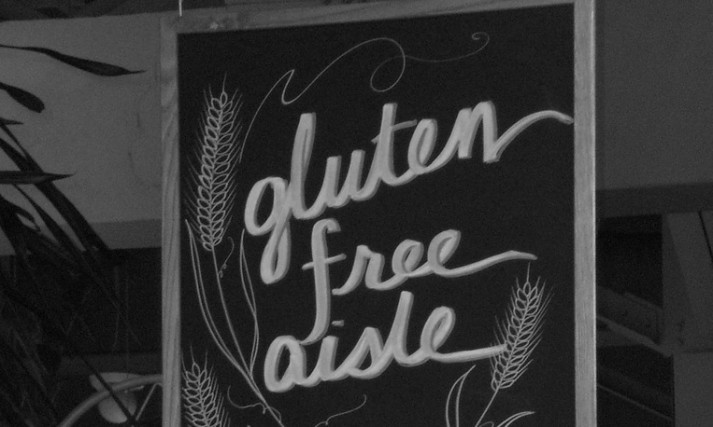
The newest darling of the marketing game.
Thanks to an increase in people being diagnosed with celiac disease (and those who have learned they have general issues with digesting gluten), every food company is rushing to put out a gluten-free version of their best-selling unhealthy product.
What is gluten, you ask? It’s a protein composite found in foods processed from wheat, barley, rye, and other related species. Again and again, grains = bad.
So, all companies are creating “healthier” versions of their products that no longer contain gluten…or (my favorite), slapping a gluten-free label on things that never had gluten in them to begin with so they can jack up the price in the name of “health.”
For example, did you know you can buy gluten-free eggs?
Well, is gluten-free better for you? Provided the food is actually labeled properly, gluten free foods would be beneficial to people who struggle digesting gluten. However, just like with “organic,” just because it’s gluten free does NOT mean it’s necessarily healthy for you.
Gluten free cookies are still cookies. Gluten free waffles are still waffles. Gluten free pizza is still pizza. Don’t fool yourself into thinking those unhealthy foods are good for you; you’re still better off eating REAL foods whenever possible.
Instead of going on a “gluten free diet” to lose weight (and continuing to eat the same things), why not try a diet that will give you a better chance to succeed. Just like going on a vegetarian diet doesn’t necessarily mean “healthy” (donuts are vegetarian!) gluten-free in and of itself is can still be unhealthy!
Final verdict: Worth the label if you’re gluten-intolerant, but do the research before you run off eating bagfuls of ‘healthy’ food.
Made with Whole Grains
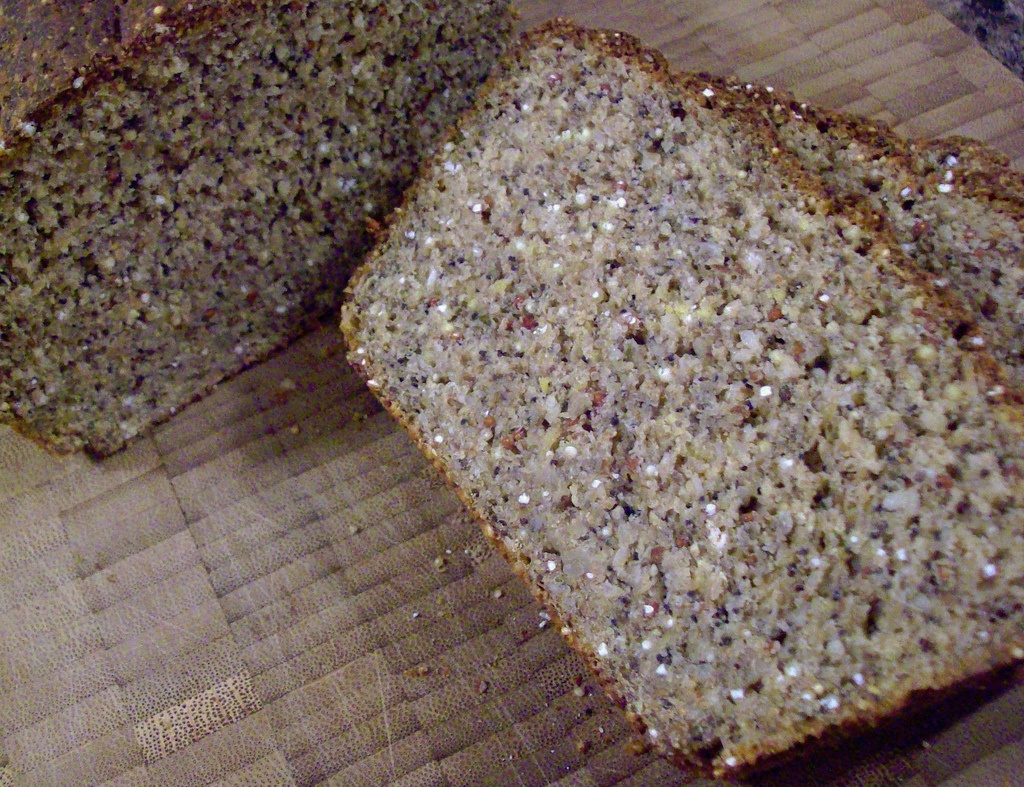
I love this one.
Ever since studies started popping up that whole grains were better for you than refined grains, marketing teams have gone out and slapped “Heart Healthy Whole Grains!” on everything they can.
Setting aside the fact that grains in general can wreak havoc on your dietary tract, and grains/sugar are the primary reason most people gain weight, whole grains might not be THAT much better than regular grains, and don’t necessarily help you live longer…
But that doesn’t matter. Marketers will do whatever they can to get their product in your hands, which is why these cereals are now labeled with “heart healthy whole grains!”
- Kix
- Trix
- Count Chocula
- Cinnamon Toast Crunch
- Lucky Charms
Sure, these cereals might have a grain in them that is “whole grain,” but they also possess a crazy amount of sugar and other ingredients that are NOT good for you.
So, be smart. Disregard the front of the label and check the ingredients and nutritional value on the back. I’m gonna go out on a limb and guess that if it came out of a box, it probably ain’t good for your heart.
No Sugar Added

This is another GEM of a marketing tactic.
In an effort to make their food appear more healthy to health conscious individuals, companies have resorted to slapping this absolutely WORTHLESS tag on foods, deserts, and drinks.
Ignore it.
If you look at ice cream or juice that says “no sugar added,” it just means that after the initial creation of the product (which contains probably a boatload of sugar already)…no extra sugar was added. It still means it contains approximately one boatload of sugar. It might have LESS sugar than other products in that category, and thus better for you (BOO SUGAR), but don’t delude yourself into thinking it’s actually GOOD for you.
Be smart. Read the back of the label. Understand that you’re eating something that probably isn’t healthy to begin with. Rather than eating buckets of the processed food that is promised to be ‘healthy,’ eat real food more often and then OCCASIONALLY go for the unhealthy stuff to stay on target.
What other SHADY labels have you seen?

That should get you started. Remember, this is a resource – don’t feel like you have to memorize it! And don’t freak out if you can’t afford the most expensive beef, eggs, and so on. Do the best you can and make small improvements when you have the means to do so.
Every little bit counts! So…
What other labels out there have you seen?
What terms have I missed?
Any favorite ridiculous ones you’d like to share?
Leave a comment and I’ll add to this article as quickly as they come in. Again, make sure you bookmark this one should you find yourself at the grocery store and unsure of who’s trying to take advantage of you with shady marketing.
For the Rebellion!
-Steve
###
Photo source: Label, organic fruit, eggs, chickens, whole grain, milk, sugar, gluten free, thief


